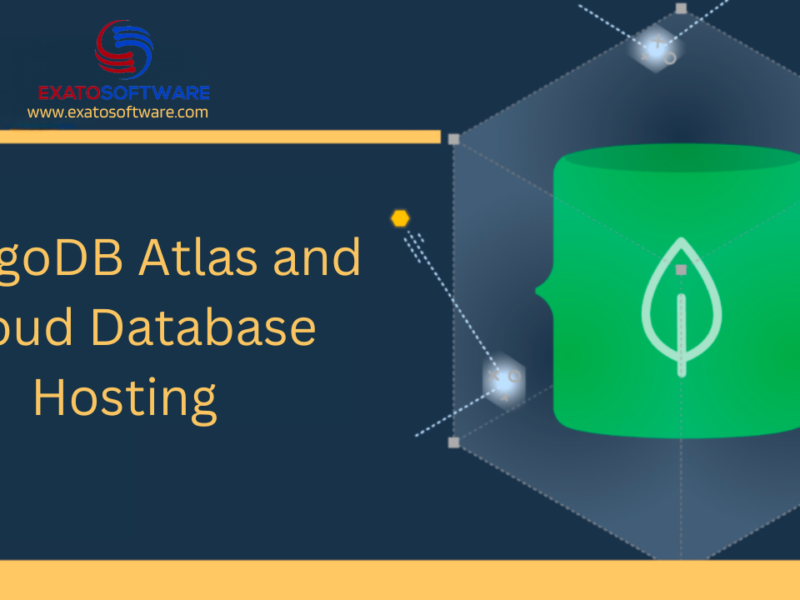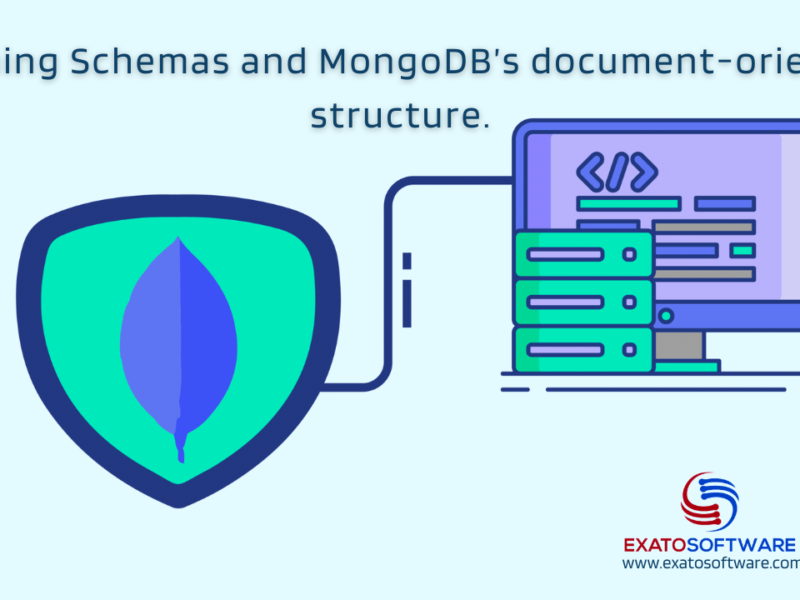NoSQL, which stands for “Not Only SQL,” is a term used to describe a category of database management systems that diverge from the traditional relational database management systems (RDBMS). Unlike RDBMS, NoSQL databases are designed to handle and manage large volumes of unstructured, semi-structured, or structured data, offering more flexibility and scalability. NoSQL databases are particularly well-suited for handling big data and real-time applications where the data model may evolve rapidly.
NoSQL databases are widely used in modern applications, especially those dealing with large-scale and dynamic data, such as social media platforms, e-commerce websites, and real-time analytics systems. It’s important to choose the appropriate type of NoSQL database based on the specific requirements and characteristics of the application at hand.
Key characteristics of NoSQL databases
- Schema-less Design: Unlike RDBMS, NoSQL databases are often schema-less or schema-flexible, allowing developers to insert data without first defining a rigid database schema. This flexibility is advantageous when dealing with dynamic and evolving data.
- Scalability: NoSQL databases are generally designed to scale horizontally, meaning they can handle increased traffic and data by adding more nodes to a distributed system. This makes them suitable for applications with growing data and user bases.
- High Performance: Many NoSQL databases are optimized for specific use cases, providing high-performance reads and writes. This makes them suitable for applications that require low-latency responses, such as real-time analytics or content delivery.
- Diverse Data Models: NoSQL databases support a variety of data models, including key-value stores, document stores, column-family stores, and graph databases. This flexibility allows developers to choose the most appropriate data model for their specific application needs.
- CAP Theorem Considerations: NoSQL databases are often designed with consideration for the CAP theorem, which states that a distributed system can provide at most two out of three guarantees: Consistency, Availability, and Partition Tolerance. NoSQL databases often prioritize either consistency and partition tolerance (CP), or availability and partition tolerance (AP), depending on the specific use case.
Popular types of NoSQL databases
- Document-oriented databases: MongoDB, CouchDB
- Key-value stores: Redis, Amazon DynamoDB
- Column-family stores: Apache Cassandra, HBase
- Graph databases: Neo4j, Amazon Neptune
How SQL and NoSQL are different?
SQL (Structured Query Language) and NoSQL (Not Only SQL) are two different types of database management systems that differ in their data models, query languages, and design philosophies. Here are some key differences between SQL and NoSQL databases:
| Key Difference | SQL | NoSQL |
| Data Model | Data Structure: Relational databases use a structured format with tables that have predefined schemas. Data is organized into rows and columns, and relationships between tables are established through keys. Schema: Relational databases have a fixed schema, which means the structure of the data (table columns, data types, constraints) must be defined before inserting data. | Data Structure: NoSQL databases can have various data models, including document-oriented (JSON, BSON), key-value pairs, column-family, or graph-based. The structure can be dynamic and is often schema-less or schema-flexible. Schema: NoSQL databases allow for more flexibility in terms of schema, enabling developers to insert data without predefining a rigid structure. |
| Scalability | Scaling: Traditional relational databases are scaled vertically, which means increasing the capacity of a single server (more powerful hardware). Limitations: Scaling vertically has limitations, and there is a maximum capacity a single server can handle. | Scaling: NoSQL databases are designed to scale horizontally, allowing for the addition of more servers to distribute the load. Flexibility: This horizontal scaling makes NoSQL databases well-suited for handling large volumes of data and traffic, providing better scalability. |
| Query Language | SQL uses a standardized query language for defining and manipulating data. It is a declarative language where you specify what data you want, and the database engine figures out how to retrieve it. | Different NoSQL databases have different query languages, and these can be either declarative or imperative. Some NoSQL databases also support SQL-like queries. |
| ACID Properties | Relational databases typically adhere to ACID properties (Atomicity, Consistency, Isolation, Durability), ensuring transactional integrity. | NoSQL databases may not strictly adhere to ACID properties. Some prioritize availability and partition tolerance over strong consistency (AP in the CAP theorem), while others maintain consistency but may sacrifice availability under certain conditions (CP in the CAP theorem). |
| Use Cases | SQL databases are well-suited for applications where the data structure is stable and relationships between entities are clearly defined. Examples include traditional business applications, finance systems, and applications with complex queries and transactions. | NoSQL databases are often chosen for applications with dynamic and evolving data, high write and read scalability requirements, and where flexibility in data modelling is essential. Examples include content management systems, real-time big data analytics, and applications with agile development cycles. |
While SQL databases follow a structured and relational model, NoSQL databases offer more flexibility in terms of data models and scalability, making them suitable for diverse and dynamic application scenarios. The choice between SQL and NoSQL often depends on the specific requirements and characteristics of the project.
Features of MongoDB
MongoDB is a popular NoSQL database management system that falls under the category of document-oriented databases. It is designed to handle large amounts of unstructured or semi-structured data. Here are some key features of MongoDB:
- Document-Oriented: Data Model: MongoDB stores data in flexible, JSON-like BSON (Binary JSON) documents. Each document can have a different structure, allowing for a dynamic and schema-less data model.
- Schema Flexibility: Dynamic Schema: MongoDB’s dynamic schema allows developers to add fields to documents without affecting the existing data. This flexibility is particularly useful in situations where the data structure evolves over time.
- Indexing: Indexing Support: MongoDB supports various types of indexes, including compound indexes, geospatial indexes, and text indexes, which can significantly improve query performance.
- Query Language: Query Language: MongoDB uses a rich query language that supports a wide range of queries, including field queries, range queries, regular expression searches, and more. Queries can also be expressed as JSON-like documents.
- Horizontal Scalability: Sharding: MongoDB provides horizontal scalability through sharding. Sharding involves distributing data across multiple servers to handle large data sets and high traffic. This allows MongoDB to scale out by adding more servers to the cluster.
- Aggregation Framework: Aggregation Pipeline: MongoDB includes a powerful aggregation framework that allows for complex data transformations and manipulations. It supports a pipeline-based approach to processing and transforming data within the database.
- Replication: Replication: MongoDB supports automatic and configurable data replication. Replica Sets in MongoDB provide redundancy and high availability by maintaining multiple copies of data across different servers.
- GridFS: GridFS: MongoDB includes a specification called GridFS, which enables the storage and retrieval of large files, such as images, videos, and audio files, as separate documents.
- Geospatial Indexing: Geospatial Indexing: MongoDB has built-in support for geospatial indexing, making it well-suited for applications that require location-based queries. This is particularly useful for mapping and location-aware applications.
- Security: Authentication and Authorization: MongoDB provides authentication mechanisms to secure access to the database. It also supports role-based access control to define user privileges.
- JSON/BSON Storage: Data Format: MongoDB stores data in a binary JSON format (BSON), which allows for efficient storage and retrieval of data. BSON extends the JSON model to include additional data types and optimizations.
- Community and Ecosystem: Community Support: MongoDB has a large and active community, providing support, documentation, and a variety of tools. Additionally, there is an extensive ecosystem of libraries, drivers, and integrations for various programming languages.
MongoDB’s combination of flexibility, scalability, and rich features makes it a popular choice for a wide range of applications, including content management systems, real-time analytics, and data-intensive applications.



